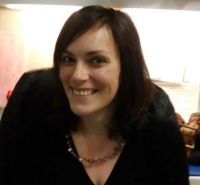
Publisher:
Bonnie King
CONTACT:
Newsroom@Salem-news.com
Advertising:
Adsales@Salem-news.com

~Truth~
~Justice~
~Peace~
TJP
Jul-09-2013 10:26

 TweetFollow @OregonNews
TweetFollow @OregonNews
A Lover's Quarrel: A Guide to Finding Sustainable Nonprofits
Echo Townsend Salem-News.comHow can people run a non-profit to better others when they can’t even grasp the importance of peace within their own lives?
 Courtesy: funandheartbreak.blogspot.com |
(PORTLAND, OR) - It could have been a Jerry Springer episode the way in which this woman began her email to me, “I told you that I have been with him for quite a while. So why did you invite him over to have sex with you.” It was immediately clear to me that the nonprofit my male friend had started was an extension of his broken relationship with her, that he had lied to her about the details of our relationship, and had withheld details of theirs. My presence as “the other woman” brought zombie-like life back into their co-dependent relationship. This being a brain devouring relationship without boundaries spilled into the nonprofit he had created, and now has spilled into my and my daughter’s lives.
My only conversation with this woman begins with her remembering me as a “party girl” and referring to me, to my face, as one of the only “groupies” of her ex-boyfriend that she could talk to (I reference him as her Ex because that’s how he referred to her). I tried to explain to this woman that her comments were mean spirited. At which point, she attempts to backtrack, explaining that she always wished she was that kind of “party girl” and I was the only groupie within his circle, who had “class.”
I was pissed off at her condescending tone, and skewed reasoning, and began to explain my friendship with her Ex partner, how he was helping me with my daughter (I am a single mother) and we have known each other for a few years and had always been friends.
I play dumb and bait her for information: “I think he likes me”. It is at this point she no longer takes responsibility for her feelings and pins all her disappointments in him, onto me. “Do you realize how much it hurt me that you hung out with him on Christmas?” she asks me point blank. This conversation occurred during the only meeting for this nonprofit that I ever attended.
My friend and his ex-girlfriend founded this nonprofit together along with another friend. They built their ideas around how their nonprofit would be different and unique from others. They had dreams of success and community support. Maybe even dreams of glory and recognition.
My friend stated to me that he wanted a job without a boss; one where he could make up his own hours. He explained that he liked having control. Ultimately, they wanted the ideal life, one where you do what you want, while helping others. There is nothing wrong with these types of altruistic dreams, because they are founded on a desire to help others, but perhaps a non-profit was not the realistic option for these specific individuals.
In the beginning, I felt great excitement to help my friend succeed in his nonprofit. He had always offered me help even when he had very little; he seemed so honest and compassionate despite his rough exterior, and oftentimes false bravado, that he used as self protection. I thought the best of him, in any event and genuinely cared about him. In time, I sold my co-workers and friends into investing in his vision.
I would later have to explain, very publicly and professionally, that my perceptions had changed, and I no longer believe his non-profit sustainable. I explained with sadness to a body of people interested in supporting his new venture, that my friend’s nonprofit would not do well in this economic climate due to his lack of organizational structure. It would turn into an embarrassment for this body of people.
These co-founders represent themselves as the permanent Board of Directors, posing a serious conflict of interest. Other problems include the sensitive issue of nepotism, lack of proper planning, no coherent budget, lack of goals and objectives, lack of transparency in mission, values, and monetary spending, along with, no reliable evaluation process, and inadequate skills and experience to manage and operate a nonprofit.
There was very little volunteer-ism other than a few friends; in fact they had turned people away as they “were not ready for volunteers at this time” and wanted “everyone to be paid”. Their non-profit group members created a website with lots of words, a poor layout and a vague mission statement. There were even tiresome little home videos introducing themselves to the public as sweet do-gooders on You-tube. Oh, and I forgot to mention the sexist video of this woman, (who alleges to be a working actress) stripping in a mock commercial, replete with raccoon eyes, bad dancing, weeping, all while being leered at by a stereotypical male chauvinist, wearing a wife beater tee shirt. Nonprofits are to help others, not perpetuate stereotypes with micro-aggressions that send clear messages of misogyny.
The group would not listen to my professional advice, so I threw in the towel and disengaged. I continued to receive more harassing emails from her, ordering me, to delete comments I had made previously, on his Facebook profile. During this time, I also received vague text messages and emails from him, with his empty apologies and excuses. He explained he had to do delete me out of his life to “salvage” his “business” as he called it.
Ultimately, I was the scapegoat for their dysfunctional relationship, and perhaps the one thing that made her feel alive, in an otherwise dismal existence. He would no longer hear my sound reasoning; he would no longer hear that his “business” would only be as successful as the people he surrounded himself with. He refused to listen anymore.
Over 90% of all start-up non-profits fail within the first one to three years for several reasons mentioned in this story. If there is one thing to learn from this “lover’s quarrel” it is that it is incredibly difficult to know the legitimate non-profits from those less sustainable. It takes research and experience working within nonprofits to see those who have real impact from those who merely dream and cannot seem to summon the direction, drive and organization that a successful non-profit requires.
A non-profit with real impact will have these characteristics:
- Volunteer-ism. This indicates the community is engaged and believes in the services provided.
- Most non-profits post on their websites the volunteer positions that are needed and can be used. Often there is an email link or phone number to their volunteer coordinator.
- Most non-profits post their annual financial reports on their websites which include the break down of in-kind donations from grants and other income.
- Most non-profits post their big donors, naming them specifically and how much they contribute as a way of saying a personal Thank you.
- You can tell they have evaluated their programs when they state what is needed to meet or exceed their goals and objectives.
- Most non-profits post how much their staff are paid and where the monies come from. Also, staff have job roles and descriptions like Program Manager, Research Analyst, Grant Writer, Accounting. NOT President, Vice President, Treasurer, and Secretary (a high school student body can get away with this, but a non-profit can’t).
- They also have a Board of Director’s with short terms who are not and have not been permanent employees.
- Other things to look for: Beware of Founder’s Syndrome- the disproportionate effects of power over the nonprofit, when this happens, the non-profit ceases to serve its mission statement and becomes the founders personal fiefdom.
- Exclusion of newcomers: This is another serious concern and happens when what was once a founder's passion and vision, becomes a limiting rather than a creative and productive force. The founder surrounds themselves with yes-men and various sycophants, rather than those individuals who can offer valuable insights into the process of running a non-profit. The founder attempts to maintain domination in all decision making. When this happens, the non-profit generally glides to the inevitable slippery slope of failure.
- Exclusion of other founders input and influence: In projects where there is more than one founder, but only one remains with the project, the remaining founder may use their influence to remove all references to other founders from the project, in order to create the appearance that they are the only one committed, engaged or in power.
- Identity of the organization: The organization may, over time, be overly identified with the person or personality of the founder and may experience diminished public trust as a result. Typically, there is little organizational infrastructure in place when this happens. There is no succession plan, because the founder deems that one is not necessary and it is not unusual to hear the timeless words, “That’s not how we’ve always done it.”
- Decision making: The founder is at the center of all decision-making. They have final say, (fiefdom).
- Nepotism/crony-ism: In its early development, the board is often selected by the founder and thus is often composed of friends and colleagues of the founder. Later, Staff are chosen due to their personal loyalty to the founder rather than skills, organizational fit, experience or capability.
As a self-reflective person, I find that I did not have a lesson to learn from this, I knew what I was experiencing through my professional lens. I have had many conversations with people in recent months, and find that my fellow do-gooders cannot tell the difference between a sustainable nonprofit and one built on altruism and passion. I lost a friend and that makes me sad. I am not really angry at these two individuals for demonstrating the common human frailties that we all exhibit at one time or another. The reality though, is that I often feel compelled to tell this woman to let him go, if indeed his existence in her life makes her so very miserable; I also want to tell this woman, that there is freedom and resolution in letting go and moving on. Which begs the question, how can people run a non-profit to better others quality of life, when they can’t even grasp the importance of peace within their own lives?

Echo Townsend
Echo Townsend is a graduate from Portland State University, with a Bachelor of Science in Community Health and Health Sciences. She has interests and experiences as vast as the diversity of people she has met and worked with. Townsend continues to write about socially pertinent issues that directly effect veterans and marginalized members of Oregon's diverse and often unseen community populations.
Raised in Haines Alaska, Townsend is a longtime Oregon resident. Townsend has written nonfiction works regarding the complexity of PTSD, health issues and is currently working on a personal memoir “Love Letters to The Universe”.
 |
 |
 |
Articles for July 8, 2013 | Articles for July 9, 2013 | Articles for July 10, 2013



googlec507860f6901db00.html


Terms of Service | Privacy Policy
All comments and messages are approved by people and self promotional links or unacceptable comments are denied.
[Return to Top]
©2025 Salem-News.com. All opinions expressed in this article are those of the author and do not necessarily reflect those of Salem-News.com.